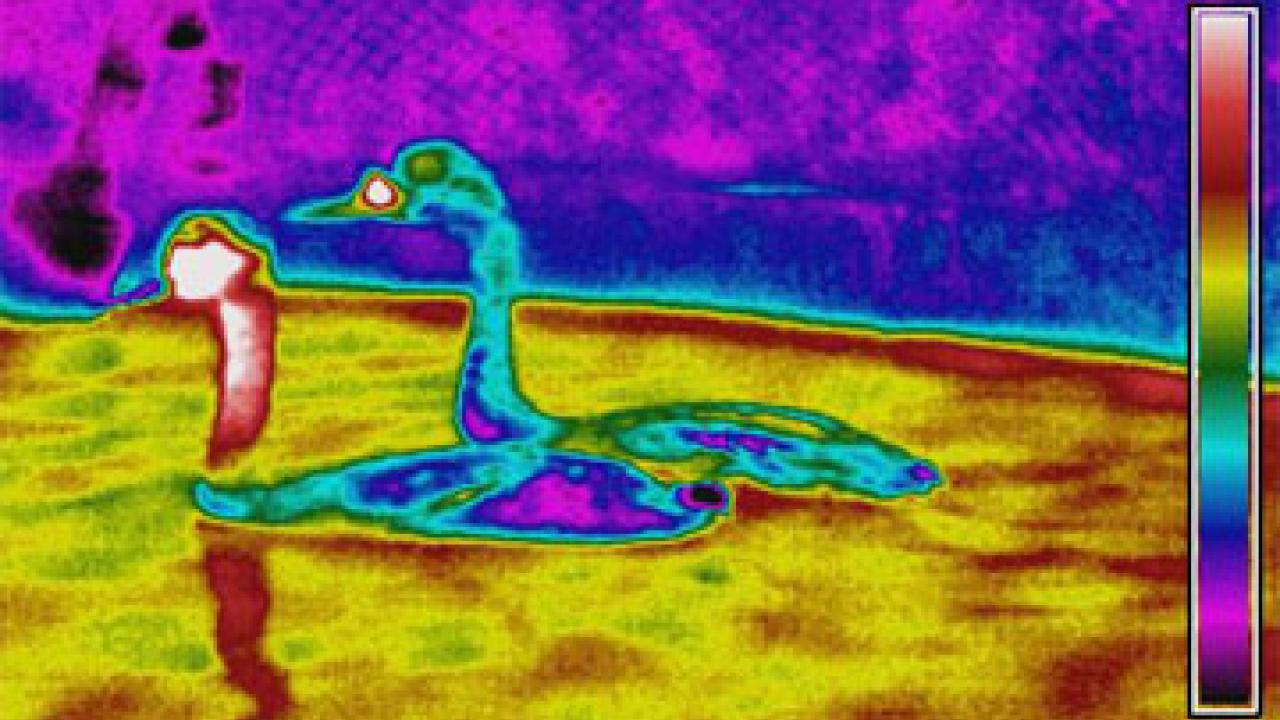A week after UC Davis veterinary scientists began treating birds injured in the San Francisco Bay oil spill, they are now broadening their focus to analyze rescue procedures in an ongoing effort to improve all oiled birds' chances for survival.
Several scientific studies have begun at the rescue center in Fairfield, said Michael Ziccardi, a UC Davis wildlife veterinarian and director of the Oiled Wildlife Care Network, which is the state of California's spill-response program.
The network is managed by the UC Davis Wildlife Health Center, which is a program of the UC Davis School of Veterinary Medicine. It is the world's finest network of emergency veterinary clinics and rehabilitation facilities for wild animals injured in oil spills.
Ziccardi leads the team of veterinarians, wildlife rehabilitation specialists and volunteers who are caring for the birds that were affected when 58,000 gallons of fuel oil spilled from the container ship Cosco Busan into San Francisco Bay on Nov. 7, 2007.
The new oiled-bird studies will include:
- Infrared thermography: This imaging technology may be useful in detecting cleaned birds that are losing body heat because they have not regained waterproofing.
- Microchips: Small identifying chips, like those gaining wide use in pet cats and dogs, will be attached to leg bands to test the technology as an aid to tracking individual birds as they move through a rescue center.
- Radio-tracking: Up to 30 birds from this spill will be equipped with external VHF radio transmitters to show researchers where the birds go and how long they live.
- Rescue center sanitation: To better protect the birds' health, the air, water, hard surfaces and feeding tubes in the rescue center will be tested for a mold called Aspergillus. To better protect the rescue workers' health, tests will be done for the presence of zoonotics -- disease-causing organisms that can travel from animals to humans -- such as Salmonella and Campylobacter.
- Blood analyses: Various data that are gathered in blood tests, such as levels of hemoglobin, fibrinogen and lactate, will be compared to determine which best predict survival.
- Anemia: Blood samples will be analyzed to gain a fuller understanding of the causes of various forms of anemia in oiled birds.
The studies will be led by Ziccardi and UC Davis spill response veterinarian Greg Massey. The research teams will include many veterinary and post-graduate students at the UC Davis School of Veterinary Medicine, as well as scientists from the U.S. Geological Survey, U.S. Fish & Wildlife Service, California Department of Fish and Game's Office of Oil Spill Prevention and Response (OSPR), and Humboldt State University.
Updates on this spill
As of 2 p.m. Friday, Nov. 16, these are the numbers:
- Birds collected alive or dead: 1,835, of at least 15 species
- Birds collected alive: 951
- Birds collected alive that died later or were euthanized: 197
- Birds washed: 394
- Birds not yet washed: 360
- Birds collected dead: 884
- Birds collected of threatened or endangered status: one oiled marbled murrelet (federal status is threatened, state status is endangered) and one oiled brown pelican (endangered status for both state and federal lists)
- Number of pre-trained and newly trained volunteers working in bird rescue program for this spill (both search and collection, and at Fairfield rescue center): more than 850
About the Oiled Wildlife Care Network
The Oiled Wildlife Care Network is managed for the people of California by the UC Davis Wildlife Health Center, a program of the UC Davis School of Veterinary Medicine.
The network is funded by the Office of Spill Prevention and Response of the California Department of Fish and Game. The Fish and Game monies come from interest on the $50 million California Oil Spill Response Trust Fund, built from assessments on the oil industry.
The mission of the Oiled Wildlife Care Network is to ensure that wildlife exposed to petroleum products receive the best possible treatment, by ensuring a rapid response, coordinating effective emergency care in a spill crisis and administering an ongoing research program.
The Fairfield center (sometimes called the Cordelia center) is formally called the San Francisco Bay Oiled Wildlife Care and Education Center. It is a 12,000-square-foot, $2.7 million facility capable of caring for up to 1,000 sick birds. It is the major Northern California rescue center in the statewide Oiled Wildlife Care Network, which comprises 12 facilities and 25 local organizations prepared to care for oiled wildlife on short notice.
Media Resources
Kat Kerlin, Research news (emphasis on environmental sciences), 530-750-9195, kekerlin@ucdavis.edu
